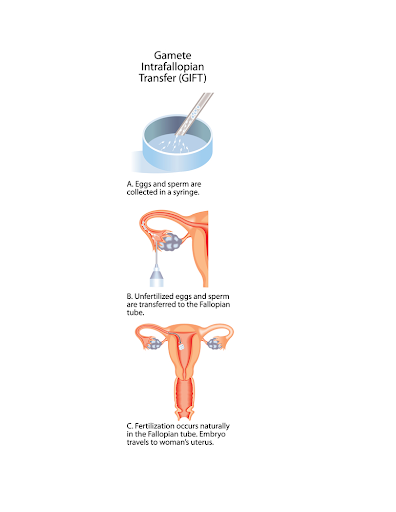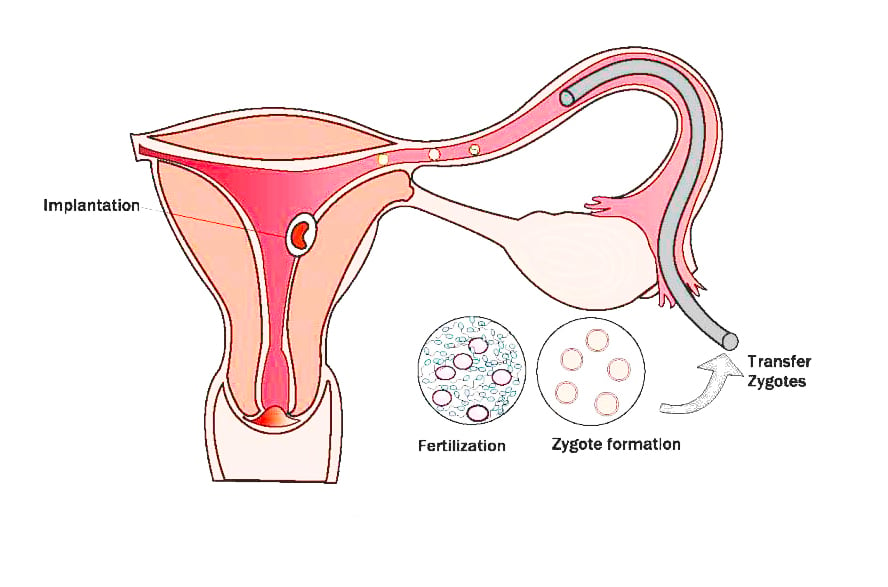GIFT and ZIFT Treatment for Infertility
Modified forms of in vitro fertilization include GIFT (gamete intrafallopian transfer) and ZIFT (zygote intrafallopian transfer). These procedures, like in IVF, are centered on harvesting or retrieving an egg from an already prepared woman, combining the egg with sperm in order to achieve fertilization, and later transferring the embryo back to the uterus. The difference… Read More
Top Doctors For GIFT and ZIFT Treatment for Infertility Treatments
Top Hospitals For GIFT and ZIFT Treatment for Infertility Treatments
GIFT and ZIFT Treatment for Infertility
Modified forms of in vitro fertilization include GIFT (gamete intrafallopian transfer) and ZIFT (zygote intrafallopian transfer). These procedures, like in IVF, are centered on harvesting or retrieving an egg from an already prepared woman, combining the egg with sperm in order to achieve fertilization, and later transferring the embryo back to the uterus. The difference is that while in traditional IVF procedures, the embryos are observed and raised in the laboratory for 3-5 days, in the ZIFT procedure the fertilized eggs, referred to at that point as the zygote, are placed in the fallopian tubes after only 24 hours.
In GIFT, the sperm and eggs are just mixed together before being inserted into the fallopian tube, and it is expected that fertilization will occur in the tubes. The procedures are modified for women who haven’t been able to get pregnant after successive IVF cycles. The idea behind the procedures is to reproduce the natural process of conception in order to maximize the woman’s chances of getting pregnant.
In ZIFT, the eggs are placed in the fallopian tubes rather than directly into the uterus. In GIFT, fertilization takes place inside the body of the woman rather than in the laboratory. The main drawback of this procedure, however, is that they require surgery, while the IVF procedure does not. This makes the IVF process to be preferred in clinics, especially as further progress is made in refining the procedure. The IVF procedure is widely used and accounts for over 97% of all assisted reproductive technology procedures, while the GIFT and ZIFT processes make up less than 3%.
What are the reasons for getting the GIFT and ZIFT procedures?
GIFT and ZIFT can help in conception for couples in the presence of some health challenges. These include:
- Unexplained infertility
- Low sperm production in the male
- Sperm antibodies syndrome
- Mild endometriosis
- Repeated failure of the conventional IVF cycle
- If the couple are objected to outside-of-the-body fertilization
What are the processes for the ZIFT and GIFT procedures?
GIFT

The initial process of GIFT is usually what one would expect in the initial stages of IVF. The normal process of inducing multiple follicle maturation and the retrieval of the matured eggs from the follicles is followed. After the collection of the eggs, the eggs and sperm are collected like they would in the process of IVF, this is where the process begins to differ from IVF. An incision is then made on the abdomen of the woman, and the sperm and eggs are placed in the fallopian tubes of the woman through a laparoscopic procedure.
The procedure requires general anesthesia, but it can also be performed as an outpatient procedure. If the process goes to plan, at least one of the eggs will be fertilized by the sperm and move down to the uterus where it will implant and continue to develop. However, due to the fact that the eggs and sperm are placed before fertilization, there is no exact way of verifying that fertilization took place. This is one of the reasons why multiple eggs are used in the procedure, even though it increases the risk of multiple births.
ZIFT

The procedure is a little bit like the GIFT procedure in that assisted reproduction takes place in the fallopian tube. The main difference between the two procedures is that the eggs are mixed in the lab, and time is given for fertilization to occur and for an embryo to form in ZIFT while it is not done in GIFT. This makes ZIFT to be closer to traditional IVF than GIFT.
In ZIFT, the woman is induced for superovulation and the eggs are harvested. The eggs are then mixed with the collected sperm in the lab to achieve fertilization, after which a zygote is formed. The zygote is transferred into the fallopian tubes within 24 hours through a similar laparoscopic procedure to the one that is done in GIFT. Since ZIFT allows for fertilization to have taken place and the number of formed embryos to be known, the number that is transferred into the fallopian tube is considerably lower than the one done in GIFT. This lowers the risk of the occurrence of multiple pregnancies and multiple births.
What are the types of infertility that GIFT and ZIFT can be used to treat?
The procedures can be used to treat most types of infertility except in the ones where the fallopian tubes were considerably damaged. The techniques can also be used in cases of mild male infertility, that is as long as the sperm can at least fertilize eggs. In cases where the woman has reached menopause and can no longer produce eggs, an egg donor can be used. Women who have premature ovarian failure can also consider egg donors if they wish to grow their families.
Are there any risks to the procedures?
The risks associated with the procedure are the ones that can be expected from laparoscopic surgery. These include:
- Pelvic infection
- Organ adhesion
- Puncture of internal organs
- Excessive bleeding
- Anesthetic risks
There is also an increased risk of multiple pregnancies and multiple births with the procedure. A case of multiple pregnancies is high-risk for both the mother and the babies as well.
Recovery
The individual can expect to return to their normal daily activities after about a week or less, as it is a routine laparoscopic procedure. Overall, however, the process of any assisted reproductive technology process like the injections, the tests, and daily monitoring can be physically, emotionally, and mentally demanding. Facilitating superovulation on its own is also tasking as it also requires regular blood tests, daily shots, and frequent monitoring by the doctor.
Are the procedures expensive?
Both of the procedures are expensive; they are usually around fifteen to twenty thousand dollars per cycle. The cost will even vary depending on the area where the couple lives, the number of cycles undergone, the amount of medication required, and the amount of insurance the couple has. The procedures may cost more than traditional in vitro fertilization.



































